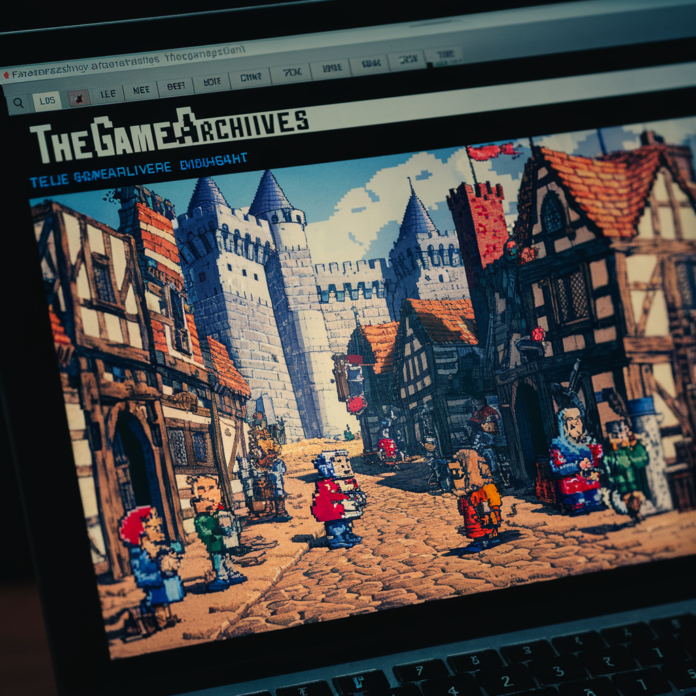Introduction
In an age where digital media can disappear overnight—whether due to corporate decisions, technological obsolescence, or simple neglect—TheGameArchives stands as a guardian of interactive history. Our mission extends beyond mere nostalgia; we are archivists, historians, and advocates working to ensure that every era of gaming, from the earliest text adventures to today’s sprawling open-world epics, remains accessible for future generations. This article explores the latest developments from our digital vaults, showcasing newly preserved titles, technological breakthroughs in emulation, and the passionate community efforts that make this work possible. TheGameArchives isn’t just a collection—it’s a living, growing testament to the creativity and innovation that define video games as both art and entertainment.
Suggested Headings & Detailed Explanations
1. Recently Restored: Lost Games Rescued from Oblivion
The heart of our work lies in recovering titles that have slipped through the cracks of gaming history. This update highlights several major recoveries, including a near-complete prototype of EarthBound 64, the cancelled Nintendo 64 RPG that later inspired Mother 3, and Star Fox 2, the long-lost SNES sequel that remained unreleased until its official launch decades later. Each restoration comes with a detailed account of the challenges faced—whether it’s reconstructing corrupted source code, negotiating with rights holders, or verifying the authenticity of rare physical media. These stories don’t just preserve games; they preserve the often-overlooked human drama behind their creation and disappearance.
2. Emulation Evolved: Accuracy, Accessibility, and the Future of Play
Playing old games on modern hardware has always been a challenge, but our latest emulation advancements are closing the gap between original and recreated experiences. We’ve implemented frame-accurate simulation for notoriously difficult systems like the Sega Saturn, allowing Panzer Dragoon Saga to run without the graphical hiccups that plagued earlier attempts. Meanwhile, our work on MAME (Multiple Arcade Machine Emulator) has brought hundreds of obscure arcade titles back to life, complete with scanline filters and CRT shaders that replicate the look and feel of vintage cabinets. This section also explores the ethical debates surrounding emulation—how we balance accessibility with respect for intellectual property, and why accurate emulation matters for historical fidelity.
3. The Metadata Project: Cataloging Gaming’s Hidden Stories
A game is more than its code—it’s the box art, the manuals, the magazine ads, and the developer interviews that surrounded its release. Our Metadata Initiative is building the most comprehensive gaming database in existence, tagging every entry with cross-referenced details: composer credits, voice actor roles, even the print history of strategy guides. This allows researchers to trace connections like never before—how Final Fantasy‘s job system evolved across decades, or which artists worked on both Castlevania and Contra. For the first time, we’re also integrating user-generated content, allowing fans to upload photos of their own collections, adding rare regional variants and merchandise to the historical record.
4. Community Spotlight: The Modders, Hackers, and Historians Making a Difference
Preservation isn’t a solo effort, and this section celebrates the unsung heroes of gaming history. Meet the team behind the Diablo “Hell 2” restoration project, piecing together Blizzard’s cancelled expansion from leaked assets. Learn how a group of Japanese fans recovered Fire Emblem: Thracia 776‘s debug menu through cartridge-dumping experiments. We also highlight collaborations with museums like Berlin’s Computerspielemuseum, where our archived materials are being used in physical exhibits. These stories underscore how a global network of enthusiasts—often working without official support—keeps gaming’s past alive.
5. The Next Frontier: Preserving Live Services and Ephemeral Games
As the industry shifts toward live-service titles and seasonal content, archivists face unprecedented challenges. How do you preserve Fortnite‘s Chapter 1 when its map no longer exists? What happens to Overwatch‘s original competitive mode after its sequel’s launch? This section examines our experimental approaches: private server emulation, 3D environment captures, and partnerships with content creators to document in-game events. We also discuss the legal gray areas of preserving always-online games, and why companies like Epic and Bungie should view archives as allies rather than adversaries in maintaining their own legacies.
Conclusion
TheGameArchives represents more than a collection of ROMs and ISO files—it’s a bridge between gaming’s past and its future. Every title restored, every interview transcribed, and every technical breakthrough brings us closer to a world where no game is truly lost. But this work depends on community support, corporate cooperation, and continued innovation in digital archaeology. Whether you’re a developer with unreleased materials, a collector with rare ephemera, or simply a player who cares about preserving the games you love, we invite you to join us in this mission. Together, we can ensure that future generations will understand not just how games were played, but why they mattered.



